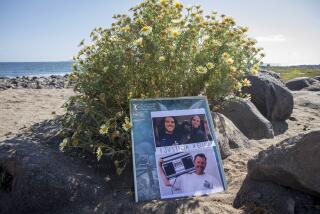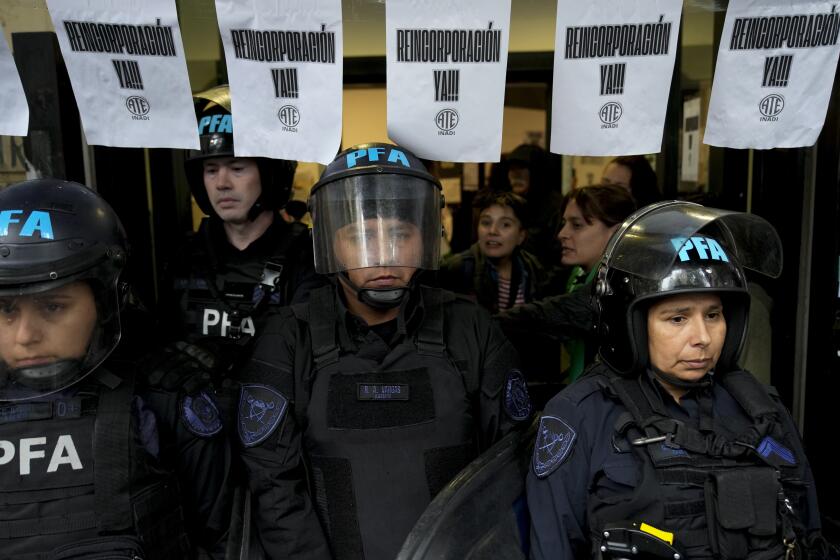Folks Are Getting Down to Business in Georgia : Atlanta: For the second time the city has tried to capitalize on a below-ground shopping complex that so far represents an investment of $142 million.
A city with virtually no downtown night life except for huge convention hotels is betting $85 million that it can successfully back an entertainment complex below its streets to keep regular visitors coming and attract new ones.
When “Underground Atlanta” opened June 15, it marked the second time the city has tried to capitalize on the 220,000-square-foot complex built under Atlanta’s downtown streets.
When the lights went out in Underground nearly a decade ago it marked the demise of what Atlanta tried to market as the Southeast equivalent of New Orleans’ Vieux Carre--a quaint mixture of bars, restaurants and even a wax museum.
The 1980 closure was linked to construction of a subway line through part of the development as well as intractable crime that scared away patrons.
But the new complex of shops, restaurants and nightclubs being opened at a cost of $142 million is more than double the size of the original Underground Atlanta.
The city government backed the project with $85 million worth of development bonds and built an on-site police station.
The resurrected Underground Atlanta was developed by Rouse Co. of Columbia, Md., which built successful downtown projects such as Faneuil Hall in Boston, Harborplace in Baltimore, Union Station in St. Louis and Riverwalk in New Orleans.
“I was the first one they approached about moving back down here, but I was not the first one to commit,” said Dante Stephensen, whose “Dante’s Down the Hatch” nightclub and fondue restaurant was one of the last original Underground businesses to close.
“I wanted to make sure it would be done right, that it would be centrally controlled, that there would be good transportation,” he added.
While Stephenson considers the new Underground a sure bet, it represents more of a gamble for Atlanta. With a booming convention business, the Peachtree City perennially ranks near the top among U.S. cities in the size and number of meetings it hosts.
But among the nation’s top 20 convention sites Atlanta ranks next to last in average expenditure per delegate, with an average of only $160 a day. It also ranks low in length of stay and attendance by convention-goers’ spouses.
Convention officials blame this on the lingering perception of crime in downtown Atlanta and a lack of nearby tourist attractions.
Travel author Arthur Frommer warned in a 1986 speech that without a reborn downtown, Atlanta’s convention business eventually would suffer an apocalyptic collapse.
“Evening Atlanta is a graveyard, a scene of death and desolation, a nullity as far as the life, culture and camaraderie present in numerous other cities,” Frommer said.
Georgia World Congress Center director Dan Graveline said industry figures “concur that we do have a problem and we are hoping that Underground Atlanta will have a significant impact.”
“The thing we are hearing is that the convention planners love Atlanta from a business standpoint . . . but the people who attend the conventions are a little bit bored with Atlanta,” he said.
Atlanta Convention and Visitors Bureau executive W. B. Baldwin acknowledges that his city had left undone much of what it should have done to satisfy visitors.
“We live in an area with a lot of history, an area that is famous for ‘Gone With the Wind,’ ” he said. “We have not done very much to capitalize on that.”
Underground Atlanta developers hope to change that by adding an Atlanta history exhibit. But the main contribution to bringing history alive is the Underground itself, an area that encloses Atlanta’s first streets.
The city began as a few shacks at the end of a 138-mile rail line south of Chattanooga, Tenn. Rebuilt after the Civil War, Atlanta’s rail traffic grew so that by 1900 more than 100 trains a day moved through its downtown area.
This caused great traffic problems for pedestrians, horses and cars, which were solved when the city built a series of viaducts over the railroads and raised the level of downtown streets one story. Original ornate entrances of many historic Atlanta buildings were left submerged below the new street level.
As older buildings were abandoned for efficient new office towers, the whole area fell into disuse. But in 1968 the city declared the five-block Underground Atlanta area a historic site.
The first Underground Atlanta entertainment complex opened a year later and thrived for several years until succumbing to problems that brought the demise of the downtown district. The original collection of eclectic nightspots was replaced by T-shirt shops, rock clubs and a topless bar.
Atlanta’s unenviable reputation for crime began growing in the early 1980s, spurred by worldwide attention to a series of grisly child murders.
“When Underground was closing, it had a terrible reputation among people who lived here in the city. It’s completely different there now,” said Sheryl Meddin, co-owner of three dessert-only restaurants with a fourth opening in Underground.
But she admits that “a little bit of crime will be the kiss of death. The city has got to be really careful about that.”
The developers’ obvious concern with crime is reflected in a 138-foot light tower dominating the part of the project above ground that will provide reading-light brightness for the entire area. Below ground, dark alleys have been transformed to bright thoroughfares.
“It has lost some of its charm and quaintness, but there are a lot more amenities and a lot better control,” Atlanta restaurateur Stephan Nygren said.
Nygren, co-owner of 15 Atlanta restaurants, predicts his new Underground eatery will do more business than any of the others, drawing conventioneers and locals alike.
“I think Atlanta people are very willing to come downtown, but there has to be a product worth coming downtown for,” he said. “Underground is going to provide that.”
More to Read
Start your day right
Sign up for Essential California for news, features and recommendations from the L.A. Times and beyond in your inbox six days a week.
You may occasionally receive promotional content from the Los Angeles Times.






